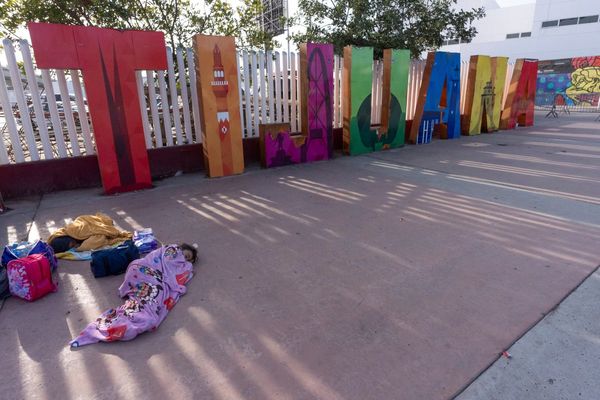
Australia’s Network 10 has long been home to a revolving ownership of billionaires. Now the recently resolved succession of its billionaire family owners — America’s Redstones — suggests it won’t be long until we see new partners on the dancefloor.
Chatter about the network’s US owner, now branded Paramount Global, has resurfaced, pumped up by reports of its 2022 streaming losses coupled with the launch of Unscripted by New York Times authors James B Stewart and Rachel Abrams, which delves into the twists and turns of its succession saga.
The book is being promoted off the titillation and family drama circling late patriarch Sumner Redstone and the managing courtiers at his twin companies ViaCom and the CBS television network, with Stewart and Abrams touching the highlights in a podcast interview.
It’s a great media yarn: the aging mogul who can’t let go; two live-in companions (“one purportedly his fiancée, with a nine-carat diamond to prove it”, write Stewart and Abrams) move in with the old man and attempt to take control; the daughter, long bullied by her father, left to rescue the family assets from an attempted boardroom coup by CBS CEO Les Moonves; then, in a sudden twist, Moonves suddenly toppled by allegations of sexual misconduct.
Finally, in 2019, daughter Shari Redstone deposes the old guard and the grifters around them and puts the businesses back together as Paramount Global. In the plot’s coda, an apparently more-or-less reconciled Sumner dies a year later, aged 97.
Australia was dragged into the turmoil in 2017 when, with Ten in receivership, CBS leveraged a takeover out of the $800 million it claimed it was owed by the network.
In Australia’s media it was seen as a rare moment when the Murdochs didn’t get their way, with the CBS takeover trumping an offer from former Ten part-owner Lachlan Murdoch. Six months later the Murdochs would largely walk away from broadcasting, merging their Fox production and broadcast assets (including their Sydney studio) into Disney.
In the US, the Ten takeover was a footnote in the Redstone succession bunfight, particularly when, a year later, #MeToo crashed into the CBS boardroom with Ronan Farrow’s New Yorker exposure of Moonves. The story — and Moonves’ prevaricating response — ended the CEO’s bid to take control by having the board cancel the special voting rights that give the Redstones control.
For Ten, it was just another very rich family taking ownership — from Reg Ansett as the founding licence-holder in the 1960s, through Rupert Murdoch’s legally contested takeover in the 1970s before he sold to Westfield’s Frank Lowy in 1987. It ended up in receivership post-Lowy and was bought out by Canada’s Izzy Asper in the 1990s.
After an early century break from billionaires, 2010 saw Ten suddenly find not one but four of them on its share registry: James Packer, Gina Rinehart, Bruce Gordon and Lachlan Murdoch — the latter as interim chair and briefly acting CEO — until it ended up in yet another round with the receivers in 2017, opening the door for the US takeover.
The challenge for the Redstones — and, by extension, for Ten — is that the demand to vertically integrate into streaming has made media too rich for billionaires on their own. The Redstones (like the Murdochs) are hanging on to voting control through dual-class shares.
In the US, Paramount is a big brand, bringing together a top-five Hollywood studio and a leading broadcast network (although pipped in 2022 ratings by Comcast-owned NBC). But it’s not the “big” you need in the 21st century, maybe not big enough to extend from production to distribution through streaming (or, in the case of Netflix, vice versa). Its competitors are already bulking up to make the leap. Disney merged with Fox and Warner Bros with Discovery. MGM got out altogether, bought by Amazon for $14 billion last year to feed its Prime streaming offering.
To compete, Paramount launched Paramount+ (available here in Australia, although its flagship show, Yellowstone, is streaming on rival platform Stan). Its 2022 financials show its direct-to-consumer subscriptions are up at 77 million — 56 million for Paramount+. The bad news? Costs are up even more, delivering an annual streaming loss of about $2.8 billion.
Wall Street has noticed, valuing the company at just $20 billion, about half what it was when Shari Redstone consolidated ownership in mid-2019.
The company is attempting to sell non-core assets — if it can find buyers. Its $3.3 billion sale of publisher Simon & Schuster to Penguin Random House was blocked by US competition regulators. Last year, the company denied a report in The Australian that Ten would be sold. Last week, it denied reports that the struggling network could be closed.
Media are an odd asset, never for sale until a serious buyer turns up at the front door. Does that sort of eager billionaire buyer still exist for Ten? Or will the Australian network end up sold on in the broader consolidation of the US industry?







